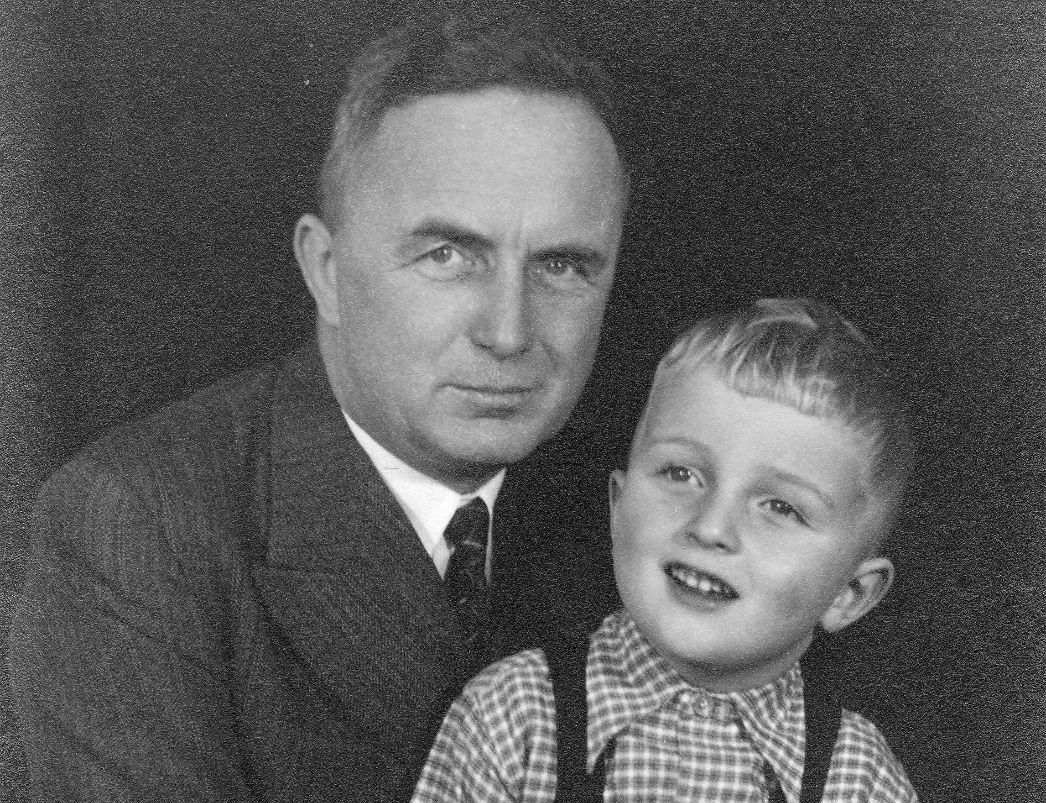Transcript
Narrator Hamburg-Bahrenfeld, 27 August 1943: As they do everyday, patients have to stand in line for an appointment with Dr. Hermann da Fonseca-Wollheim. Since the beginning of the war, only a few medical practices have remained open. The fifty-year-old father of two is very busy. His practice is going extremely well, although he is repeatedly subject to harassment because of his Jewish grandfather. But on this day, the patients will wait in vain. His wife Käthe remembers:
Käthe Fonseca-Wollheim On the 27th of August 1943, my husband was arrested in our apartment by the Gestapo without any mention of the reason. He was immediately taken to “Kolafu”.
Narrator In the so-called Kolafu, the notorious police prison in Hamburg-Fuhlsbüttel, Hermann da Fonseca-Wollheim was questioned again and again over the course of weeks. But what was the accusation?
Since 1942, he had been in charge of several camps where Ukrainian female labourers forced to work for Hamburg companies were being housed. He did not discriminate between them and his German patients. Because the camp was poorly supplied with medication, he would even make use of his own supplies to give the women adequate care.
Käthe Fonseca-Wollheim A very good relationship developed between the patients at these camps and my husband. [...] The cause of the arrest was a letter written to my husband by the inmates of these labour camps for women. [...] This letter was in Russian and it testified to the devotion and gratitude felt by the female patients in these camps.
Narrator But the Gestapo assumed that Fonseca-Wollheim had asked for the letter for the sake of protection should Germany be occupied by Soviet troops.
The culturally interested doctor’s enthusiasm for foreign languages also turned out to be ill-fated. After completing his studies, Hermann da Fonseca-Wollheim had travelled the world as a ship’s doctor and then spent five years as a physician in Persia. He spoke English, French, Spanish, and Persian. To be able to communicate with the Ukrainian forced labourers, he had also learned some Russian.
Käthe Fonseca-Wollheim This too was held against him and used to support the suspicion that he was maintaining connections to Russia that were hostile to the state.
Narrator Although there was no evidence, the Gestapo held Fonseca-Wollheim in custody for months. The well-connected family tried everything they could. High-ranking acquaintances advocated for him – without success.
On the 17th of March 1944, Hermann da Fonseca-Wollheim was transferred to the Buchenwald concentration camp. Because of his Jewish grandfather, he was considered a “second-degree mixed-blood”. As a reason for the arrest, the SS noted “friendliness to foreigners” in his documents.
His wife and his two sons were not told where he had been taken. It was not until early April that they received a letter from Buchenwald. It was Fonseca-Wollheim’s last sign of life.
Käthe Fonseca-Wollheim
On the 18th of May, I received the message that my husband had died of dysentery and heart failure [...]. After surrender I received a visit from a former Buchenwald inmate, who explained in more detail the circumstances of my husband’s death. According to this fellow inmate, inhuman working practices and poor nutrition were the causes of my husband’s death.


